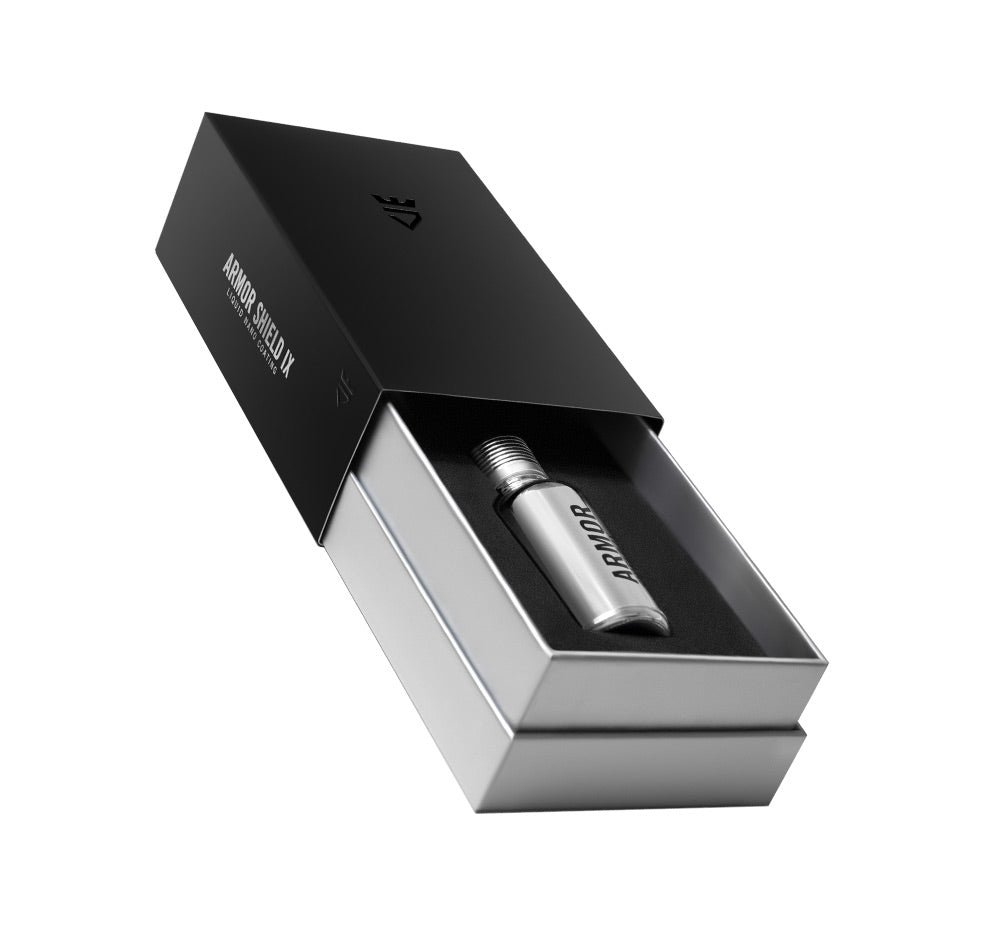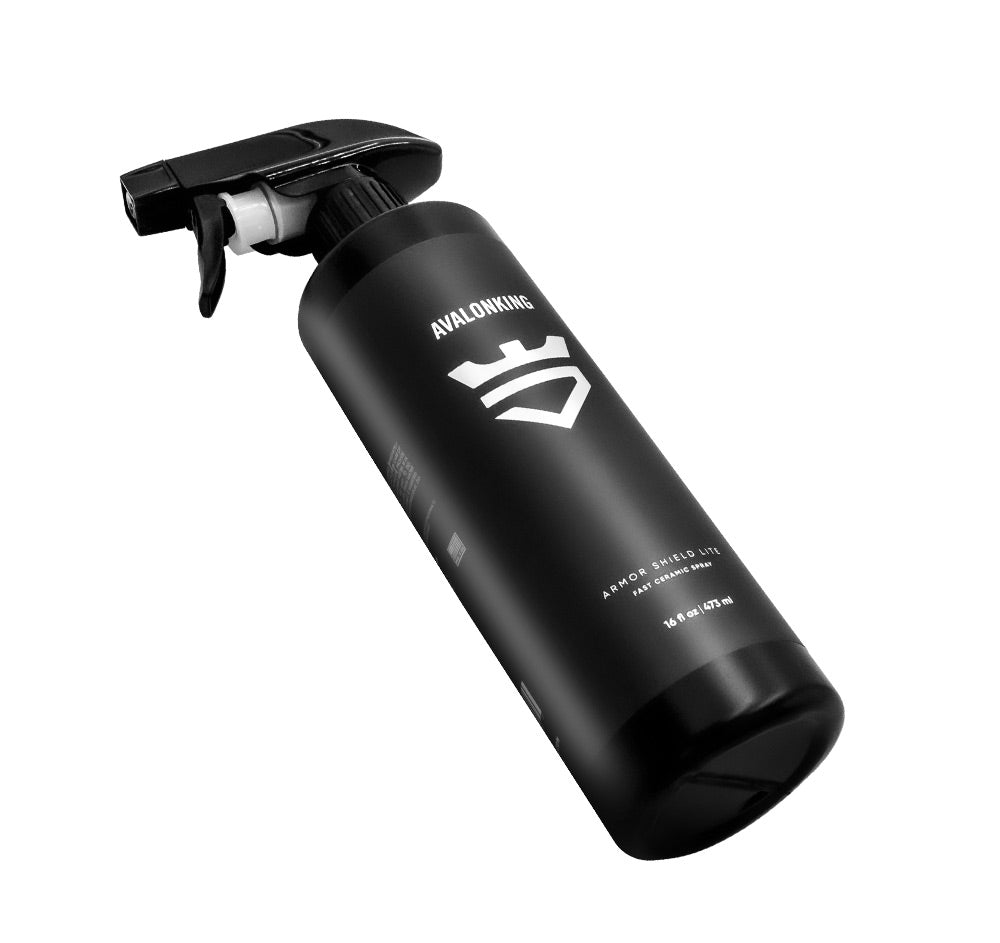While most modern cars, trucks, and SUV’s are increasingly made with plastics and other rust-prohibitive materials, the development of rust is still a threat. Rust is the slang term for iron oxide, a common chemical compound that is created with the blending of iron and oxygen.
While there are several preventative measures applied at the factory, and several aftermarket products that can help reduce the build-up of rust, one of the most effective products to prevent the blending of these two dance partners is a ceramic coating – like Armor Shield IX.
But, is applying a DIY or ceramic pro grade product worth it – just for added rust protection? That’s the question we’ll tackle today. In today’s AvalonKing blog, we’ll talk about rust protection and ceramic coating products – how rust is formed, what OEM’s do to prevent it on newer vehicles, and how a ceramic coating helps to reduce the blend of O2 and FE (oxygen and iron for the chemistry deficient.)
What Causes Rust on Cars?
So – let’s head back to high school chemistry. Iron Oxide is the technical name for rust. The chemical formula is Fe2O3, which breaks down to two parts Iron – three parts Oxygen.
The process of corrosion is electrochemical in nature. To accomplish this, you need an anode, electrolyte, and a cathode. The corrosion process is completed when the electrolyte delivers fuel to anodes. This introduces oxygen to the metal which frees electrons to move to the cathode. This process develops rust eventually.
Why Does Water Cause Rust on Cars?
For iron to develop into iron oxide or rust, three items are needed – oxygen, water, and iron. Anytime water spots touch an object, two things happen instantaneously. First, the water mixes with dirt and carbon dioxide in the air, which creates a very weak carbonic acid and morphs to a better electrolyte.
When this weak acid slowly dissolves iron, it slowly breaks down into two elements – oxygen and hydrogen. This begins the freeing of electrons, which then bond to other metals and starts to form iron oxide.
Why Does Saltwater or Acid Rain Produce Rust on Cars?

Since the root source of iron formation is the introduction of water with iron, and the water blends with acids in carbon dioxide, we can assume that the root source of rust formation is electrolyte-enhanced liquids. Items like saltwater, magnesium chloride (road salt), or acid rain with extremely high levels of electrolytes to begin with and thus, rapidly expedite the corrosion process.
Rust only requires a cathode, anode, and electrolytes to develop – which all three are found on cars, trucks, and other automotive equipment – along with the daily environment. When there is excessive humidity, the moisture in the air is enough to provide the electrolyte component – which is why cars in high-humid climates can generate rust (even when protected by a car cover).
What is Done at the Factory to Reduce Rust Potential on Cars?

Do you remember the movie Fargo? Specifically, when Jerry (the husband who hired a few dudes to kidnap his wife) was being yelled at by the new car buyer because he charged them for a ‘rustproofing’ install? Well, that’s a prime example of what many automotive manufactures (dealers specifically) did to protect the vehicle from corrosion.
It was common in cold weather climates, like the Twin Cities where the majority of Fargo was based. It was an undercoating or spray coating that would provide a protective layer on top of metals and would block water from penetrating to the metal (sound familiar).
Today, automotive manufacturers have gone further to develop materials and processes that are less susceptible to corrosion. A few techniques used by manufacturers include:
Using plastics and polycarbonate materials: In the good old days, the two leading areas that would develop rust quicker than other spots were bumpers and lower body panel along the side of the vehicle. Back then, car owners would apply heavy coats of wax on those trouble areas. Nowadays, many of these car parts are made from hard plastics or polycarbonate materials. Since none of these materials are capable of being the cathode or anode – rust is eliminated.

Rust protection in paint and primer: For vehicles that are still made from steel and iron components, manufacturers have infused synthetic ingredients in the primers and paints they use, that help to block corrosion from developing. Basically, it’s a water protectant. However, if the paint is scratched to the bare metal, corrosion can quickly occur.

Creative manufacturers: The time machine that Marty traveled back to 1955 was rustproof. It’s not because that sucker was electrically charged by the flux capacitor, it was due to the stainless steel body found in the DeLorean. Corvettes are made with fiberglass bodies (another rust-free material) while older Saturn cars famously had side panels made of plastics.
How Ceramic Coatings Help Prevent Rust on Cars

In the education section above, we clearly (hopefully) explained what rust is, how rust is formed, and the measures that automotive manufacturers of today do to reduce the potential of corrosion. The simple truth is that vehicles showing up at car dealerships these days are less likely to develop rust than in years past.
But – the treat still exists.

The main source of rust development on cars today is with vehicle suspension components, brake calipers, and other metallic parts that are openly exposed to outdoor air, water, and salt (either water or de-icing). Metallic body parts are also likely to develop rust if paint becomes scratched and exposed to the elements.
So, let’s be real for a minute. Applying a ceramic coating sealant to undercarriage suspension parts is a bit of overkill. The likelihood of bird droppings or swirl marks forming underneath the vehicle is remote at best. While I’d be totally cool promoting a customer who did such, it’s something the daily driver or average consumer is going to do – especially since most modern cars have coated metallic suspension parts.
The main area to be concerned with is the body panels, especially lower areas that tend to be coated with road salt flung from tires. This is where applying a ceramic coating can be quite helpful. So how does a ceramic coating help to protect against developing rust?
This video really provides a detailed explanation on how ceramic coatings work. Give it a watch.
How Does Automotive Ceramic Coating Work?

Ceramic coatings are concentrated formulas or a liquid-polymer. The primary ingredient is silica dioxide or SiO2. The higher the percentage of SiO2 – the stronger is cures and bonds. The coating will penetrate those microscopic imperfections on a surface – like an image below shows. It then delivers a strong and very flat surface.

Nano Ceramic Coatings like Armor Shield IX uses nanotechnology to seal those tiny pores and valley’s in a porous surface as a clear coating. This creates the hydrophobic quality that reduces water from pooling and keeps dirt and dust off the surface level.
So, what can you ceramic coat with Armor Shield IX? Here is an awesome video that explains all of those things you never thought could be coated.
Wrapping it Up
So – is applying a ceramic coating solely to protect your car from corrosion and rust worth it? Most definitely; yes, it is. The cost of a DIY ceramic coating, the time spent prepping the vehicle, and application is far less costly than repairing rust damage. While cars of today are less likely to experience corrosion due to the new materials, paints and scratch-resistant materials applied at the factory, older cars – especially rebuilds and restorations are not as fortunate.
If you’re going to spend hours and thousands of dollars restoring your vehicle, removing rust, and completing tons of bodywork, consider the proactive measure of applying a high-quality DIY ceramic coating or protective coating to your ride. It simply makes sense.












